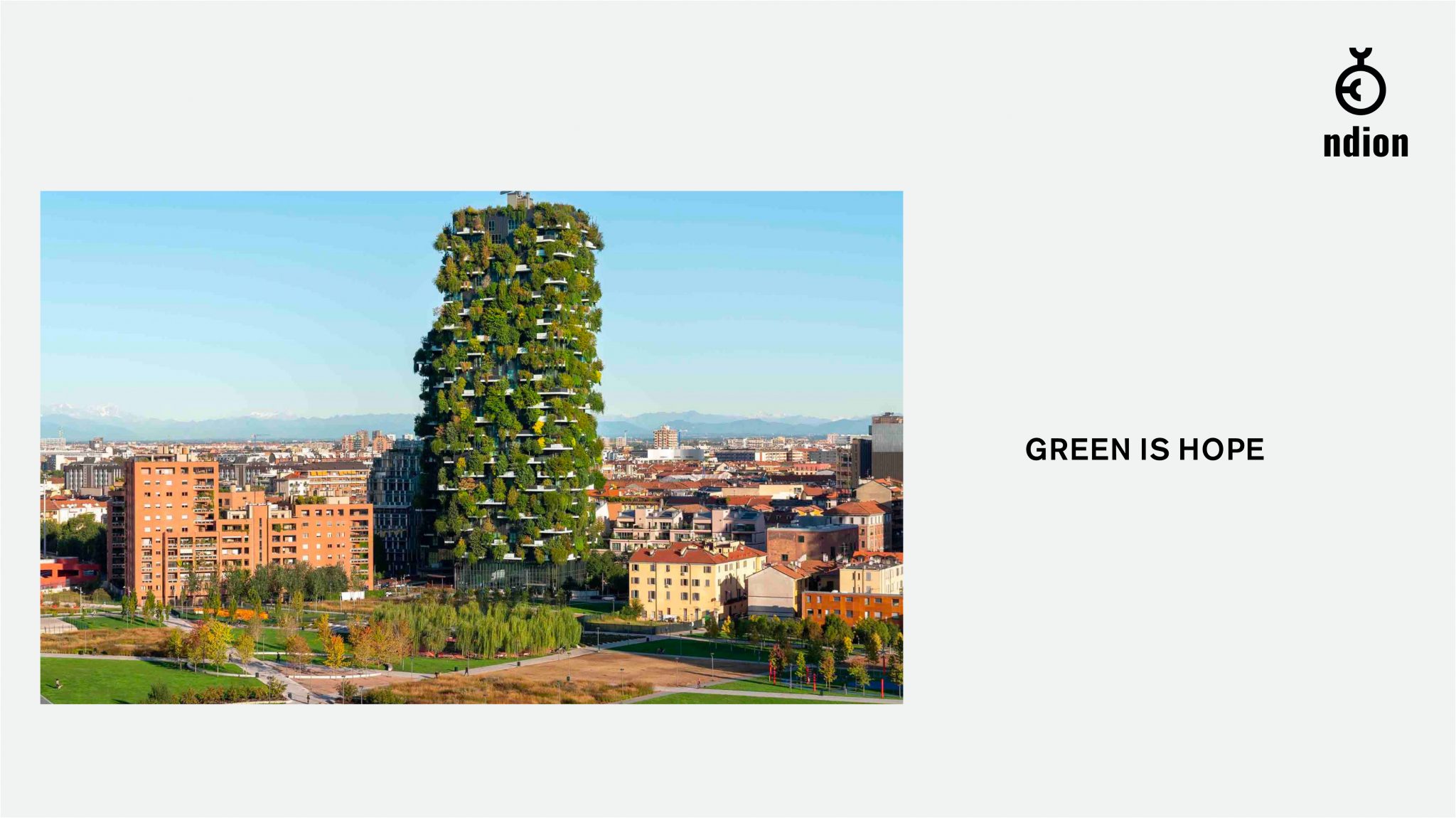
In ndion, a magazine of the German Design Council, an article entitled ‘Green is hope‘ focuses on the contribution of living nature in cooling and generally improving living conditions in cities, citing Boeri Studio’s Bosco Verticale as a pioneer of this approach.
Cities such as Singapore, Paris or Frankfurt have pledged to make their areas greener in order to combat the rising temperatures caused by climate change. Indeed, forecasts indicate that in some metropolises, by 2100, it could be up to eight degrees higher than today. And the effective way to counter this negative trend is to plant trees: they provide shade and moisture and thus ensure cooling with natural air conditioning that can reduce the temperature in the immediate vicinity by one to eight degrees. In addition, an adult urban tree can absorb 12.5 kg of CO2 and produce 4,600 kg of oxygen per year, thus contributing to climate targets.
But urban greenery is not only an important factor for climate adaptation: greenery helps combat noise and particulate pollution, increases biodiversity and, last but not least, contributes to improving the psychological condition of citizens.
One of the limitations of urban forestation, however, is the space available for healthy plant growth. As a virtuous solution, the Bosco Verticale, completed in 2014 in Milan’s Porta Nuova district, is cited, with vegetation on its façades equivalent to that of 30,000 square metres of forest and undergrowth, concentrated on 3,000 square metres of urban area.
To read the full article: https://ndion.de/en/green-is-hope/
